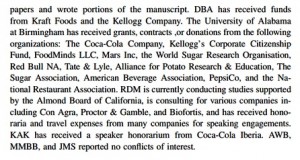Weekend thinking: NutraIngredients-USA’s special edition on cognitive health
The role of specific nutrients in brain health isn’t something I think about much. I’m of the opinion that a reasonably healthy diet takes care of health. Stop worrying, be happy.
But I’m always interested in what the food industry is cooking up based on current research, and here’s a good sampling to ponder.
For this Special Edition, NutraIngredients-USA has a long hard think about cognitive health…
Cognition spans the lifetime, from development in the womb right through to old age. So, which ingredients have the best science? How are companies approaching this sector and what claims can they make? What’s all this about the gut-brain axis? And what’s happening with botanicals in this space?
- Gallery: The top ingredients for cognitive health: Memory, attention and focus, development, mood; there are numerous ways that a nutrient or ingredient can affect cognitive health. But which have the most science, how do they work, and how are they performing in the market. Check out our gallery of the top ingredients for cognitive health. .. Display
- Cognitive health claims range from sublime to ridiculous, experts say: When it comes to what’s an allowable claim in the realm of cognitive health, ignorance and confusion abound, experts say… Read
- ‘The eye and the brain are connected, so it’s no surprise lutein is important for brain health,’ says Kemin: Lutein and zeaxanthin are well-established in the realm of eye health, but ever emerging science shows the importance of the carotenoids in brain health. And that comes as no surprise to Kemin, with ‘eye health and brain health are coming together as one’… Read
- Evidence of gut/brain connection piles up, but actual products are a ways off, researcher says: The gut is teeming with bacteria, good and bad, and these organisms and their cousins living elsewhere on and in the body outnumber the body’s own cells by an order of magnitude. It is only recently that the notion has come to the fore that these microorganisms are doing something other than helping us digest food or aiding in keeping nefarious colonies at bay. Now researchers are beginning to realize that there is a feedback loop at work between the brain and the gut, with one influencing the other… Read
- Botanical ingredients step up to battle cognitive decline: Botanical ingredients for cognitive health indications abound, and the scientific backing for these ingredients is abundant, too, if you are willing to look, experts said… Read
- NIU’s Cognitive Health Forum: ‘The key is to not have ingredients that stimulate other areas of the body that are not needed for performance’: Cognitive health formulations must be driven by mechanisms of action, and with cognition being a lifelong issue with many aspects to consider the possibilities are impressive and continually developing, according to experts at the NutraIngredients-USA Cognitive Health Forum… Read
- Fish oil linked to structural changes in the brain: Human data: Fish oil supplements may produce beneficial structural changes in the brain, according to a new study from Brown University and Rhode Island Hospital… Read




